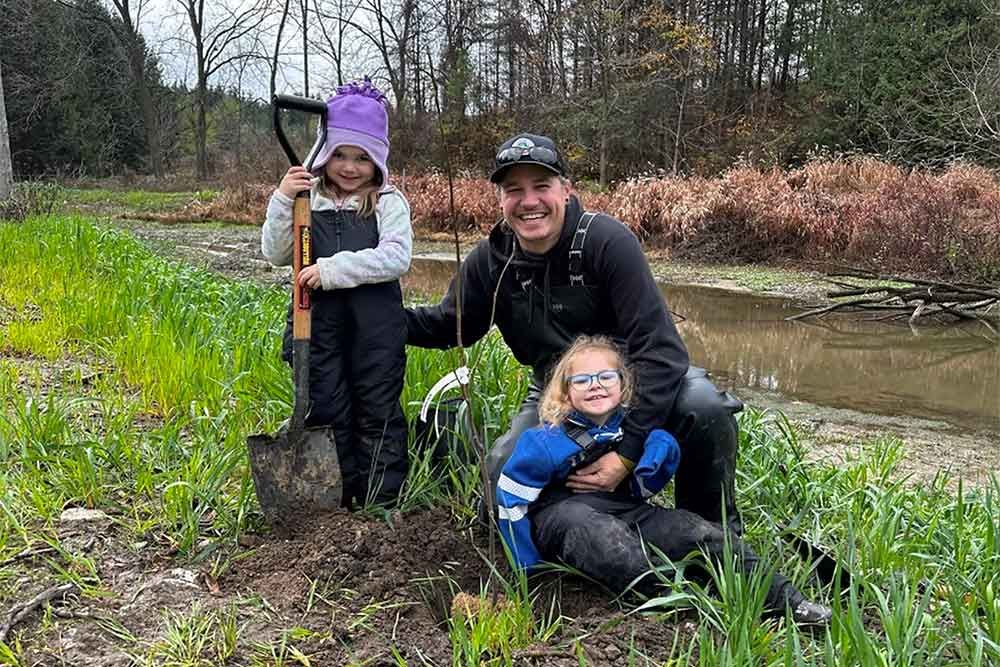Maitland Conservation restoring fish habitat

SUBMITTED BY MAITLAND CONSERVATION
Maitland Conservation has worked with local landowners to remove two private fish barriers and restore aquatic habitat. Both sites had online ponds which were restored to wetlands to improve water quality.
Maitland Conservation also worked with community groups to undertake stream plantings and offered workshops highlighting the health of the nearshore environment and actions landowners can take to improve nearshore conditions.
This has been possible thanks to funding support from Environment and Climate Change Canada (ECCC), Bruce Power, Maitland Conservation Foundation, and Huron County Clean Water Project.
If you are interested in learning more about these projects, phone Shannon Millar, Stewardship Restoration Supervisor, at 519-335-3557, extension 233, or email smillar@mvca.on.ca
100 per cent funding is available for projects in the Eighteen Mile and Northshore sub-watersheds as well as the Middle Maitland sub-watershed.
If you are interested in your own restoration project, please call Marisa Roefs, Stewardship Technician, at 519-335-3557, ext. 235 or email mroefs@mvca.on.ca
Environment and Climate Change Canada has recently completed a Nearshore Assessment of Lake Huron. The assessment identified the key stressors impacting the nearshore environment.
Maitland Conservation’s jurisdiction spans the whole section from Point Clark to Goderich and 12 kilometres of the northern section from Goderich to Kettle Point. Overall, this stretch of shoreline is under moderate stress, while the highest stressor is nuisance and harmful algae. This is caused by high nutrients that promote excessive algae and cyanobacteria growth, which interfere with ecosystem and human health along our beaches.
To learn more about the Nearshore Assessment, please read the Lake Huron Canadian Nearshore Assessment, 2021 Highlights and Results Report.
Only 30 per cent of our naturally occurring stream habitat remains connected to Lake Huron, according to the Nearshore Assessment.
Barriers, including dams, have contributed to this, according to the report.
The lack of connection between stream habitat and Lake Huron has been identified as a key issue in the Lake Huron Lakewide Action and Management Plan along Lake Huron’s southeast shores.
To find out more about other lakewide challenges facing Lake Huron, read the Lake Huron Lakewide Action and Management Plan 2022-2026.
Barriers to aquatic habitat have the potential, according to the research, to cause a negative impact on the overall ecosystem health of streams and watersheds. They have the potential to:
- Increase flooding upstream.
- Increase erosion downstream.
- Create a migration barrier for fish and other aquatic species.
- Alter the natural sediment balance upstream and downstream.
- Increase water temperature, allowing algae to thrive and coldwater fish species habitat to decline.
- Reduce oxygen for aquatic life.
PHOTO INFORMATION: Mike Sklad, of Fishing Friendzy, is shown with his daughters at the community dam restoration planting at Naftel’s Creek in November of 2023.
